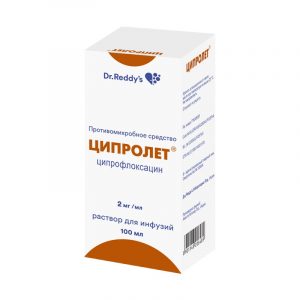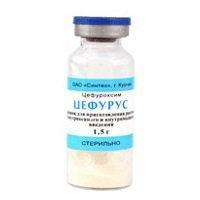Description
Pharmacological action
Broad-spectrum antibiotic. It has a bacteriostatic effect due to the suppression of protein synthesis of pathogens.
Active against aerobic gram-positive bacteria: Staphylococcus spp. (including penicillinase producing strains), Streptococcus spp. Gram-negative bacteria: Neisseria gonorrhoeae, Bordetella pertussis, Enterobacter spp., Escherichia coli, Klebsiella spp., Salmonella spp., Shigella spp. anaerobic bacteria: Clostridium spp.
Also active against Rickettsia spp., Chlamydia spp., Mycoplasma spp., Spirochaetaceae.
Pseudomonas aeruginosa, Proteus spp., Serratia spp., most strains of Bacteroides fragilis, most fungi, small viruses are resistant to tetracycline.
Indications
Infectious and inflammatory diseases caused by tetracycline-sensitive microorganisms, incl. pneumonia, bronchitis, pleural empyema, tonsillitis, cholecystitis, pyelonephritis, intestinal infections, endocarditis, endometritis, prostatitis, syphilis, gonorrhea, brucellosis, rickettsiosis, purulent soft tissue infections, trachoma osteomyelitis, conjunctivitis, blepharitis.
Prevention of postoperative infections.
Contraindications
Hepatic failure, leukopenia, mycoses, children under 8 years of age, pregnancy, lactation (breastfeeding), hypersensitivity to tetracycline.
Special instructions
If severe allergic reactions occur during the use of ceftolosan + tazobactam, the drug should be discontinued and appropriate measures taken. Patients with hypersensitivity to cephalosporins, a history of penicillins or other beta-lactam antibiotics may also be hypersensitive to ceftolosan + tazobactam.
Caution should be exercised when using ceftolosan + tazobactam in patients with any other history of hypersensitivity reactions to penicillins or other beta-lactam antibiotics.
In clinical studies, the efficacy of ceftolosan + tazobactam was lower in patients with moderate renal impairment compared with patients with initially normal renal function or mild renal impairment. In patients with an initial renal impairment, any changes in renal function during treatment should be regularly monitored and, if necessary, the dose of ceftolosan + tazobactam should be adjusted.
Cases have been reported with ceftolosan + tazobactam
Caution should be exercised when using ceftolosan + tazobactam in patients with any other history of hypersensitivity reactions to penicillins or other beta-lactam antibiotics.
In clinical studies, the efficacy of ceftolosan + tazobactam was lower in patients with moderate renal impairment compared with patients with initially normal renal function or mild renal impairment. In patients with an initial renal impairment, any changes in renal function during treatment should be regularly monitored and, if necessary, the dose of ceftolosan + tazobactam should be adjusted.
Cases have been reported with ceftolosan + tazobactam
Caution should be exercised when using ceftolosan + tazobactam in patients with any other history of hypersensitivity reactions to penicillins or other beta-lactam antibiotics.
In clinical studies, the efficacy of ceftolosan + tazobactam was lower in patients with moderate renal impairment compared with patients with initially normal renal function or mild renal impairment. In patients with an initial renal impairment, any changes in renal function during treatment should be regularly monitored and, if necessary, the dose of ceftolosan + tazobactam should be adjusted.
Cases have been reported with ceftolosan + tazobactam
In clinical studies, the efficacy of ceftolosan + tazobactam was lower in patients with moderate renal impairment compared with patients with initially normal renal function or mild renal impairment. In patients with an initial renal impairment, any changes in renal function during treatment should be regularly monitored and, if necessary, the dose of ceftolosan + tazobactam should be adjusted.
Cases have been reported with ceftolosan + tazobactam
In clinical studies, the efficacy of ceftolosan + tazobactam was lower in patients with moderate renal impairment compared with patients with initially normal renal function or mild renal impairment. In patients with an initial renal impairment, any changes in renal function during treatment should be regularly monitored and, if necessary, the dose of ceftolosan + tazobactam should be adjusted.
Cases have been reported with ceftolosan + tazobactam In patients with an initial renal impairment, any changes in renal function during treatment should be regularly monitored and, if necessary, the dose of ceftolosan + tazobactam should be adjusted.
Cases have been reported with ceftolosan + tazobactam In patients with an initial renal impairment, any changes in renal function during treatment should be regularly monitored and, if necessary, the dose of ceftolosan + tazobactam should be adjusted.
Cases have been reported with ceftolosan + tazobactam
Composition
1 tab. tetracycline hydrochloride 100 mg
Dosage and administration
Inside adults – 250-500 mg every 6 hours. Children over 8 years old – 25-50 mg / kg every 6 hours.
Topically applied several times a day, if necessary, apply a weak bandage.
Locally – 3-5 times / day.
The maximum daily intake for adults when taken orally is 4 g.
Side effects of the digestive system: nausea, vomiting, anorexia, abdominal pain, diarrhea, constipation, dry mouth, glossitis, discoloration of the tongue, esophagitis, transient increase in liver transaminases, alkaline phosphatase, bilirubin concentration, residual nitrogen.
From the side of the central nervous system: dizziness, headache.
From the hemopoietic system: neutropenia, thrombocytopenia, hemolytic anemia.
Allergic reactions: skin rash, itching, eosinophilia, Quincke’s edema.
Dermatological reactions: photosensitivity.
Effects due to chemotherapeutic action: candidal stomatitis, candidal vulvovaginitis, intestinal dysbiosis.
Local reactions: pain at the injection site.
Other: vitamin B hypovitaminosis
active substance
Tetracycline
Terms of delivery from
pharmacies Prescription
dosage form
tablets


